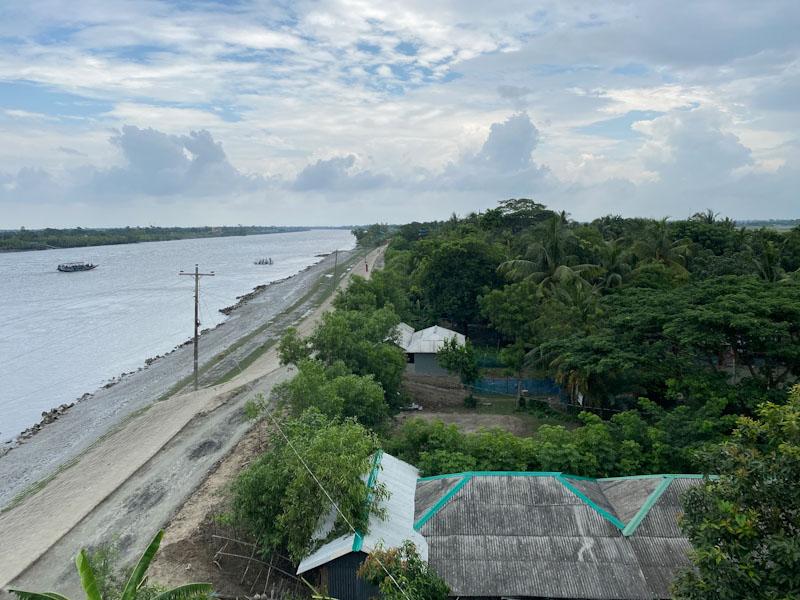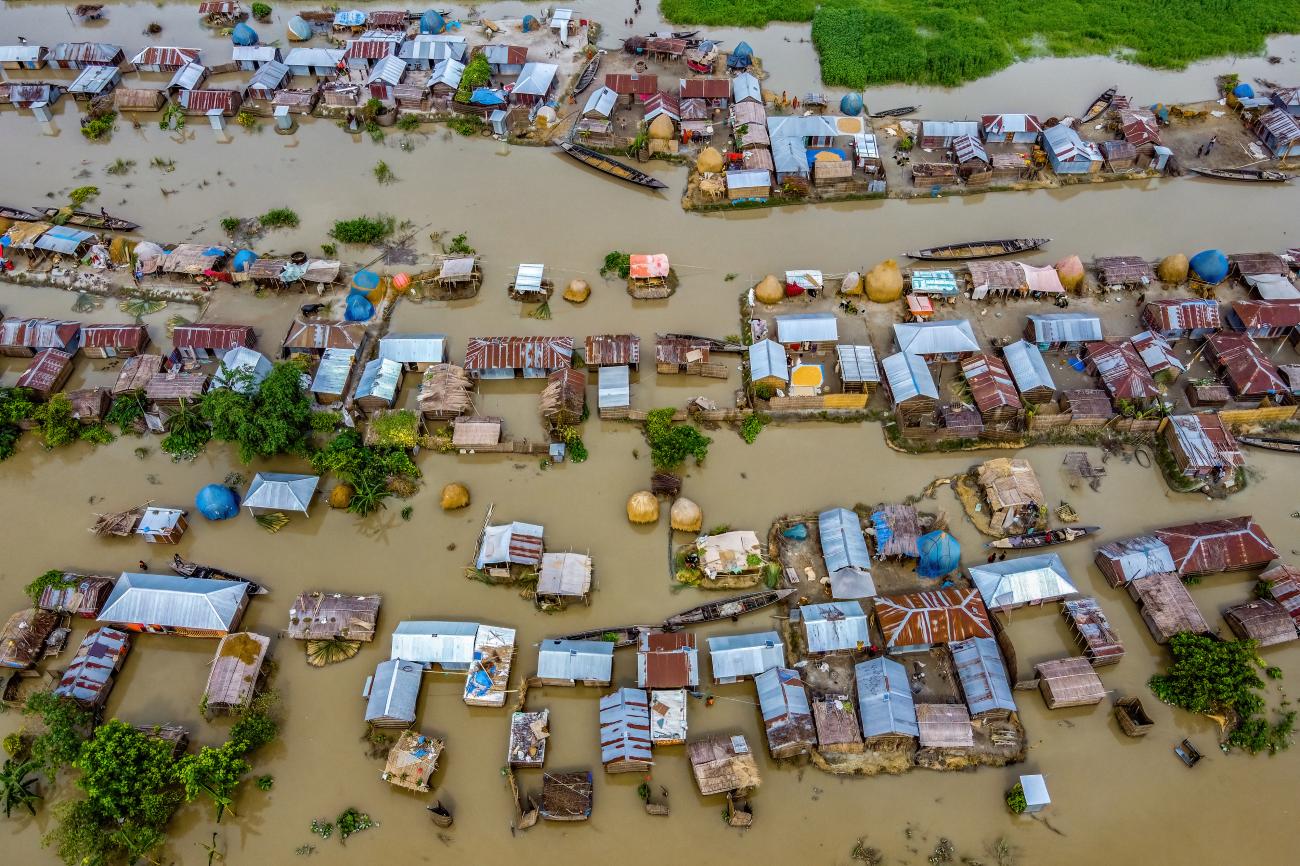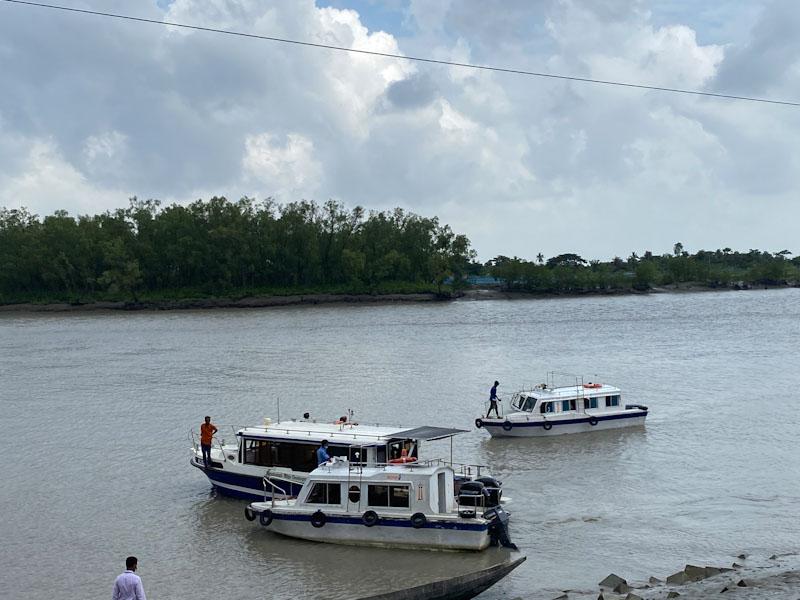The detrimental impact of climate hazards in poorer coastal regions goes far wider than affecting the lives of communities in the area – it also reduces their access to critical infrastructure and acts as an obstacle to achieving the UN’s Sustainable Development Goals (SDGs).
Researchers studied 8.2 million coastal homes in Bangladesh affected by floods, cyclones and erosion hazards with the poorest being disproportionately threatened in 69% of coastal sub-districts.
In their paper: Climate threats to coastal infrastructure and sustainable development outcomes, published in Nature Climate Change, the authors say their study can help address this bias by identifying areas where adaptation measures should be prioritised to protect the local populations access to critical infrastructure services and safeguard current SDG progress.
Co-author Sarah Gall, a DPhil student at the Environmental Change Institute (ECI), said:
Climate hazards are having a disproportionate impact on poor and vulnerable people and communities. This is a consequence of poorer people living in more exposed locations. The repeated impact of climate hazards over time can chronically impact health, education and employment opportunities, and drives out people, leading to a ‘poverty trap’ for those who stay.
“Our research found an ‘exposure bias’ in the exposure of households to climate disruptions to infrastructure services, using information about the socio-economic situation and the access to critical infrastructure services on a household level.”

Alison Peard, ECI DPhil student and co-author, added: “When assessing exposure to any climate hazard disrupting any infrastructure service, a statistically significant poverty bias is observed in 104 upazilas, equivalent to 69% of the coastal region of Bangladesh.
We found, for example, that households in the poorest socioeconomic group were 1.13 times more likely to experience disruption to education facilities due to coastal flooding than households in the wealthiest group. This translates to 1,130 households in the poorest quintile experiencing disruption for every 1,000 households experiencing disruption in the wealthiest group.”
This is the first time, more detailed analysis has been used in this way combining information on the individual households socio-economic vulnerability, data about local facilities, and data of future climate hazards to estimate SDG progress at risk.
The study can be considered a case study that shows the level of analysis that would be possible in any climate risk prone area where data on a household level is available to evaluate where infrastructure adaptation is required to safe-guard SDG progress on a household level. In their study the researchers estimate 46% of households report no access to electricity across the region, while 18% are further than 5 km from their nearest healthcare facility.
The researchers say, “high-resolution analysis is becoming feasible even in data-scarce parts of the world, helping decision-makers target and prioritise pro-poor development interventions.”
Their case study was based in Bangladesh because of the high population and their exposure to many different climate hazards. The reason that poorer households are more exposed in parts of coastal Bangladesh reflects several interacting factors, including typically highly resource-dependent livelihoods, insecure land ownership and an uneven distribution of accessibility to land, less capacity to migrate to cities where incomes are on average higher, land degradation linked to previous hazards, and a lack of protective infrastructure.
Amelie Paskowski, ECI Alumnus and co-author, added: “For instance, gradual increases in soil salinity and/or chronic waterlogging have impacted agricultural production, damaging the livelihoods of the marginal coastal population. A limited capacity to relocate may reinforce this continued exposure to a greater intensity of climate hazards, which continues to pose significant challenges for development.
“In our study we considered 3,770 cyclone shelters that have been built in the coastal region of Bangladesh. Our results suggest that poorer households are on average closer to cyclone shelters than households with higher socio-economic status, reflecting a long-standing policy of providing cyclone shelters for the most vulnerable in Bangladesh. This is widely regarded as a successful disaster risk reduction intervention, which we find to be measurably pro-poor.”
To fully achieve the government’s SDG targets, the researchers say new infrastructure will also have to be built across the coastal region and the rest of Bangladesh to reach populations that are underserved, not connected, or unable to benefit from infrastructure services due to a lack of proximity.
Current levels of disruption from a 1-in-50 year probability event on average:
- Coastal flooding – 39.5%
- Riverine flooding – 22.7%
- Cyclones (wind damage) – 94.5%
- Erosion – 56%
The project was carried out with ECI DPhil students Sarah Gall and Alison Peard, ECI Alumni Dr Daniel Adshead, Dr Amelie Paszkowski, and Dr Mohammed Sarfaraz Gani Adnan, with ECI Senior Research Associate Dr Jasper Verschuur, under the guidance of Professor Jim Hall, OPSIS lead and Professor of Climate and Environmental Risk at the ECI.
Bangladesh is situated in a global hotspot of climate hazards, with more than 80% of its land area consisting of floodplain lands. Frequent and intense fluvial, pluvial, and tidal flooding, cyclonic winds and associated storm surges, and widespread riverbank and coastal erosion impact the country on an annual basis. The repeated damages and disruptions to infrastructure networks as a result of these multiple hazards place a heavy burden on the country’s economic growth, social resilience, and progress towards achieving the SDGs.
Sarah Gall added: “Currently, there is a lack of high-resolution accurate and reliable data to distinguish local and regional vulnerability differences. These factors can explain the wide variations between estimates of climate risks, for example in river floodplains and coastal zones, which can undermine efforts to target adaptation towards the most vulnerable.”
Dan Adshead, first-author and ECI Alumnus added: “Where national resources are limited, our results provide the means for investment prioritisation on adaptation measures at local scales, which can also promote economic activity and lessen poverty in the coastal region.”
Read the paper in full: Climate threats to coastal infrastructure and sustainable development outcomes




